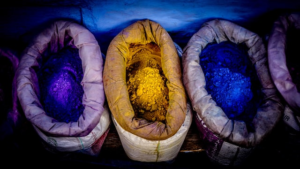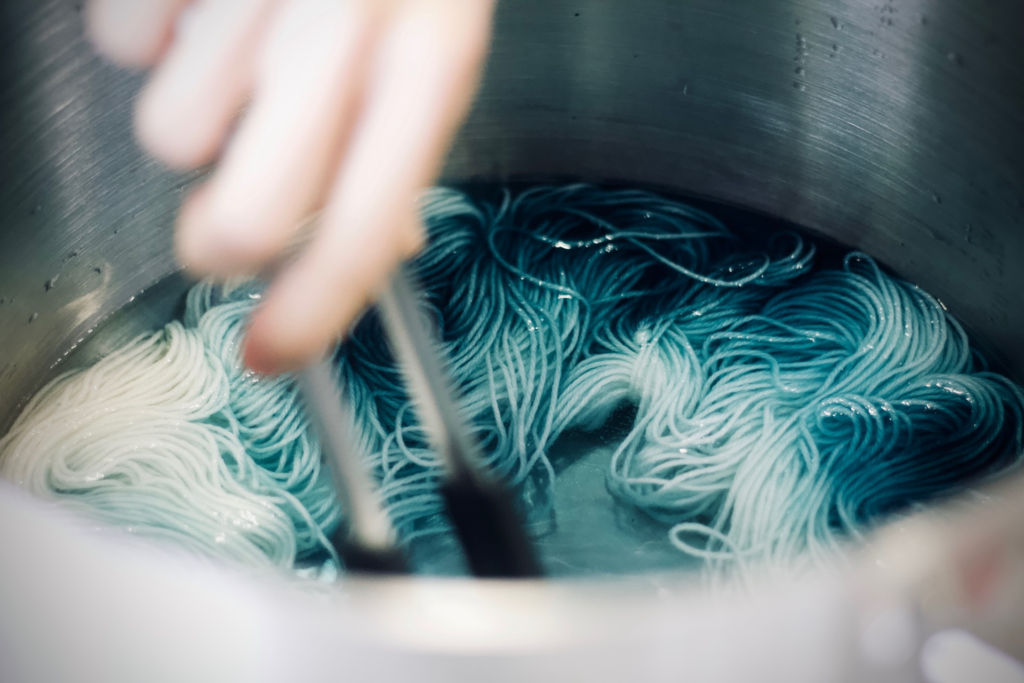Dyeing parameters:
The parameters that we need to consider during successful dyeing of cotton, MMFC or Blends that we can ask as dyeing parameters. Most of the parameters have very strong effect on fabric, yarn or garment dyeing process. So, we it will be helpful for textile personnel to know the parameters that we need to consider during dyeing of textile materials.

Effect of Temperature:
Temperature of the dye bath plays vital role for dyeing. Rise in temperature has a large effect on an increase in the diffusion rate of dyes into fabrics. Increasing of temperature of dyeing m/c causes explosion of m/c. So temperature of m/c should be maintain according to m/c feature.
Effect of pH:
In the beginning of dyeing, the water bath should be carefully adjusted to a neutral to slightly acidic pH, as otherwise premature hydrolysis of dyestuff will take place and cause (a) uneven dyeing & (b) lighter depths than the previous batches or other words batch to batch variation will occurs.
M/C Speed:
No. of contacts in the number of time of which the fabric comes into contact with the dye liquor during dyeing process. This will depend on the machine which speed & number of jet nozzles passages.
Effect of m/c capacity:
Most difficult portion of wet processing is to estimate fabric dyeing capacity of m/c. This is difficult as different shades require wide range of times to complete dyeing process. Amount material are loaded on m/c according to fabric type, fabric weight, fabric construction and shade percentage.
Effect of Hardness:
In textile wet processing, the water quality plays a vital role in determining the product quality consistency and production efficiency. The most important quality in governing the dye house quality is the water hardness. During the time of textile processing, the hardness of water may vary due to metal content of some chemicals used in the processing, i.e. salts or electrolytes and also for the metal contamination in the textiles to be processed.
Yarn count & twist:
Color shade variation in dyed fabrics is one of the most common causes of B-grade fabrics & rejections in the textile dyeing industry, causing huge annual losses in profits.
GSM:
GSM means grams per square meter. Due to fabric GSM the fabric may be heavier or lighter. GSM varies from fabric to fabric, especially with the count of fabric.
Chemical concentration:
Concentration of various chemicals such as acid, alkali, salt are important parameters of dyeing. Quality of a fabric due to dyeing depends on these concentration.
Shade percentage:
Shade percentage refers to the quantity of dye taken for a dyeing expressed as a percentage of the dry weight of the material(W.O.M.) to be dyed, e.g. 1gm dye to 100gms material = 1% Depth of shade.
If a kilogram of fibre required to be dyed to a 3.55 shade, the amount of dye to be taken would be (1000x 3.5) /100 = 35 grams.
Dosing time:
It is the term used to denote the time required in minute for transferring the dyes or chemicals from the addition tank to the interior of the machine.
Cycle time:
In exhaust dyeing method cycle time is important factor. No. of contacts in the number of time of which the fabric comes into contact with the dye liquor during dyeing process. This will depend on the fabric rope speed and number of jet nozzles passages. It is generally termed as cycle time.
DETERGENT:
Chemical character is fatty alcohol polyglycol ether in an aqueous, glycolic solution. Detergent is widely applicable in the continuous and discontinuous pretreatment of all types of fiber and their blends. To remove impurities, mineral oil contamination and sizes from the fabric. These products are either soap or synthetic detergents.
ACETIC ACID (CH3COOH):
Acetic Acid is used to neutralize the fabric from alkaline condition and to control the pH value in wash bath.
SALT & SODA:
Salt( NaCl) is widely used as electrolyte in reactive dyeing. Salt acts as penetration & soda acts as fastness.
SODA ASH:
It is used also for colour fixing in dye bath.
STABILIZER:
Stabilizer is used to protect break the hydrogen peroxide and peroxide works in bath smoothly.
DESIZING AGENT:
Desizing agent is used to remove mainly starches, cmc, waxes, fats pectin’s, minerals & unfixed indigo dye from denim, twills, poplin & canvas fabrics etc.
WETTING AGENT:
It accelerate wet ability of mtl in solution. Thus helps to easy penetration of chemicals into substrate
It is used in scouring, bleaching & dyeing. It also reduce surface tension of water.
SEQUESTERING AGENT:
To eliminate water hardness used in pretreatment, bleaching, dyeing.
LEVELLING AGENT:
To achieve uniform dyeing over the whole substrate by controlling the rate of dyeing. It is a non-ionic surfactants type compound, either fibre substantive or dye substantive.
LUBRICANT:
To prevent contact between solid surfaces in relative motion in order to reduce function, wear, overheating & rusting.
ANTIFOAMING AGENT:
To prevent foam in dyeing bath.
ANTI CREASING AGENT:
Used in dye bath or finishing stage to prevent creasing of fabric.
ANTI PILLING AGENT:
Some MMF & blended fibre fabrics can easily form pill in their surface, this agent is used to prevent such kind of problem.
Ref.s:
- Industrial attachment report at “Silver Composite Textile Mills Ltd.” by Mohammad Ali Hayder under supervision of Sazid Elahi, Lecturer, Dept. of Apparel Engineering, Bangladesh University of Textiles.
- http://textilelearner.blogspot.com

